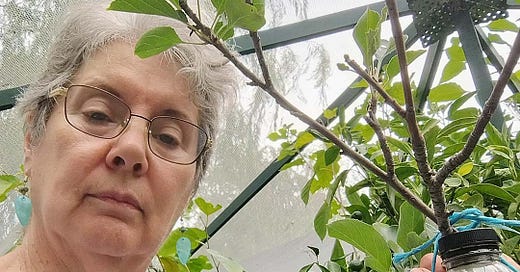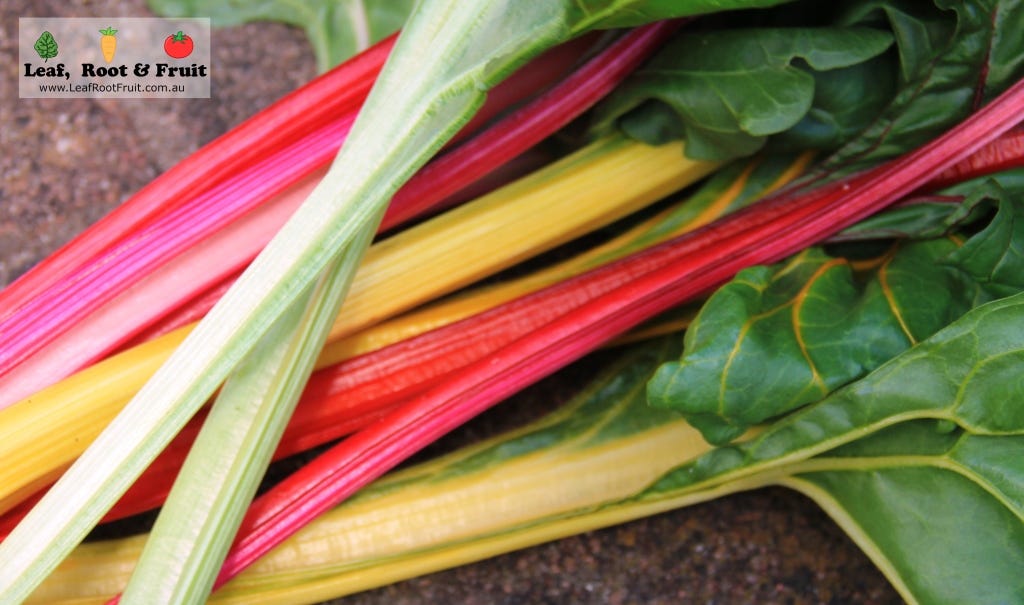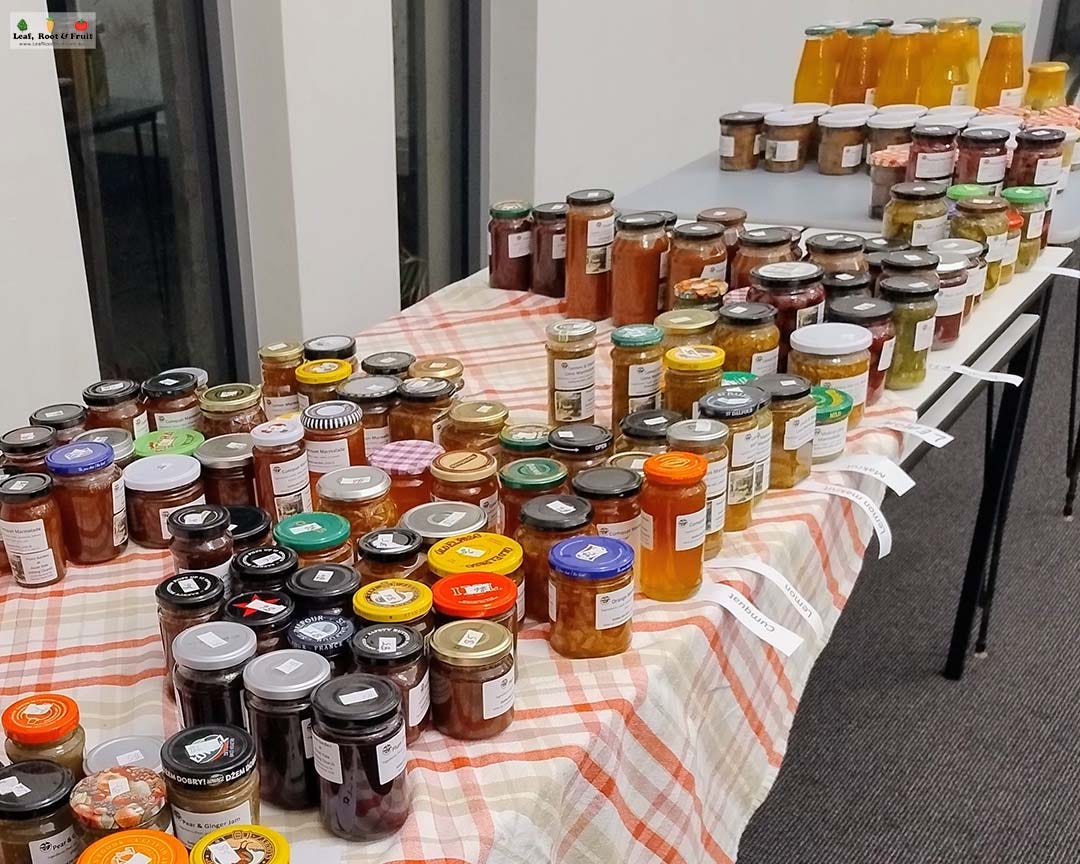Eileen’s Queensland Fruit Fly Success Story
A message of hope and inspiration for managing this dreaded foe
Last autumn I experienced an outbreak of Queensland Fruit Fly (Bactrocera tryoni) in my orchard. The discovery was devastating. I wondered if I’d ever enjoy the satisfaction of biting into a freshly picked piece of fruit again. My readers were very supportive. One reader’s comment on a social media post particularly inspired a sense of optimism. Eileen Ray wrote that she had first discovered Queensland Fruit Fly in her garden nearly 20 years ago.
“This year I had more problems with rats and mice than Queensland Fruit Fly. Keeping the garden clean, as you are already doing, and putting out baits in mid-spring before the weather is warm enough for Queensland Fruit Fly to hatch all help. I've hardly had anything affected this year.”
I’m just beginning my journey with Queensland Fruit Fly, but Eileen has been successfully managing it for years. I’m keen to understand her approach and I know many of my readers will be too. Eileen has kindly agreed to share her wisdom with us.
“As this is a very important issue I'm very happy to help. It affects all gardeners.”
Eileen Ray
Eileen’s journey with Queensland Fruit Fly
I am retired. I live on a slightly larger block than normal in Ascot Vale. I moved here in the 1990s and already there was a huge fig tree, peach and kiwi vines. Every time something died I replaced it with something edible, so now I also have a grape vine, apples, assorted berries, cumquat, plums (in the chook run where there is no cherry slug), pears, mulberries, mandarin, lemons, babaco, apricot, limes, almond, goji, tamarillo, assorted currants which are yet to fruit, and macadamia. Unfortunately the peach tree died of old age. It had produced the very biggest and sweetest clingstone I've ever eaten. (Other people have back yards. I have an edible jungle.)
In about 2007 there was an outbreak of Queensland Fruit Fly in Melbourne. We were letterboxed about it and told to keep an eye on the garden.
I used to pick tomatoes as they started to change colour – a result of a constant rat problem – and keep them on a large white platter where I could see the colour changes easily. One day I noticed some slime under a tomato. I cut it open and out jumped a maggot. I wondered...
I got in touch with the Department of Primary Industries (DPI) who told me the outbreak was a long way from here, but if I was happy to leave a sample outside someone would collect it and determine if it was actually Queensland Fruit Fly. Unfortunately it was. The exclusion zone for Queensland Fruit Fly was immediately widened to include a much greater area of Melbourne. At times I was upset that I wasn't allowed to take salad to work for lunch – I worked on the other side of town. The DPI staff came and inspected everyone's back yards and sprayed and put out traps. (For a few years I had the very best nectarine crops because they had also stopped the codling moth.) I found lots of infected fruit and veggies over the next while and was determined to try and stop the problem as unlike codling moth, the entire piece of fruit or veg affected is completely inedible. At least with codling moth one could cut out affected bits and eat the rest.
I was interviewed on Gardening Australia at the time. They filmed someone from the DPI pouring poison on my garden (a place which I still haven't planted again.)
Trapping has been the key
I don't use poison in my garden. I want to feel comfortable eating stuff.
My approach to living with Queensland Fruit Fly is simple: keep trapping. Mid-spring I put out both male and female traps. I do use the male traps from Bunnings, and some of the female traps, but also some home made ones. I have the traps all over the garden. So I need the home made ones as the others are expensive.
I use a mix of 1 tablespoon cloudy ammonia to 1 cup fruit juice in the home made female traps. I buy the cheapest – apple or blackcurrant and apple. I belive that any fruit juice other than pineapple works.
I know these work as I used to often watch the females fly in but never come out again. At the end of the season there are lots of remains in the bottles. Traps are hung ½ meter to 2 metres above ground.
On my normal suburban block I have 6 female traps, mostly in the backyard where my fruit trees and vegetables are, and 2 male traps with one in the front and the other in the back. The more male Queensland Fruit Fly I spot, the more often I change the mixture in the female traps.
I usually don't replace the liquid in the female traps unless they look to be really drying up or filled with rain. [Note that Agriculture Victoria advises that the mixture can last up to three weeks but should be changed weekly for best results.] In late autumn, when it's too cold for Queensland Fruit Fly to be out and about, they need to be taken down. I'm usually put off by the contents of the traps. I pour them into a large flat container and leave it to dry out over winter. It's never a pretty sight.
Vigilant surveillance
Another important trick is to pick every piece of fruit. Don't let any fall to the ground as the Queensland Fruit Fly maggots might escape before you find them. Every piece of fruit that does fall to the ground is picked up, examined for maggots and, if I'm suspicious, the fruit is zapped in the microwave before composting.
Last year, I didn’t lose any produce to Queensland Fruit Fly, but that is unusual. The norm is the occasional tomato or chilli is affected. The nectarine tree had to be chopped down as it was too close to the house and affecting the foundations, and that was another major place I'd find them.
So far this year I haven't lost any produce to Queensland Fruit Fly. This I think is the third year in a row of success.
Why bother?
“I need my produce garden for mental and spiritual health as well as bodily health. There's really no point giving up growing food.”
The stuff I buy is nowhere near as fresh. I know because it goes off so quickly. Home grown mostly tastes so much better. I don't waste as much as I know the effort that has gone into producing it in the first place. The chooks rarely even get leftovers as I work out how to incorporate them into another meal. Ugly veggies are the norm but taste great. I have found documentation of my being concerned about climate change since the 1990s. I would love to be able to leave a better planet to my descendants. Growing food is counter-cultural too. In my youth we protested against uranium mines and the Vietnam War. So I'm still a hippy at heart.
A silver lining
Part of my food journey has resulted from the first Queensland Fruit Fly outbreak. I run a garden swap at my local church and one day a guy turned up with his full Fowler’s Vacola set and jars and announced he wasn't doing it any more as his apricot tree had Queensland Fruit Fly and he'd had it cut down in disgust! It took me a while to gain confidence, but I joined the Facebook group Fowler’s Vacola Users and found a whole community of people who patiently answered beginners’ questions with a wealth of information. It took about 15 years to get the confidence, but I have recently run very basic introduction to preserving classes to help others who don’t know where to start.
Lately I've been processing lots of foods to sell for fundraising for charities, both home grown and bought, although people are starting to bring their excess stuff to me to process too. Last year I processed over 600 jars of jams, pickles, relishes, sauces, cordials, etc in a tiny old-fashioned kitchen with just the one Fowler’s unit.
A massive thank you to Eileen for sharing her story with us. I’m hugely appreciative of both the wisdom and the optimism that it inspires. In my own short journey with Queensland Fruit Fly, I have bounced back from deep despair to a more optimistic view of how this pest can be managed. The more I research and the more stories I hear from gardeners such as Eileen, the brighter the future feels for home grown food.









What an inspiration this lady is. Very interesting.
Thanks so much Eileen